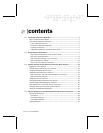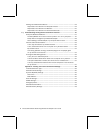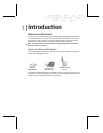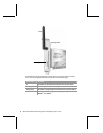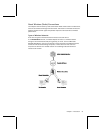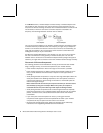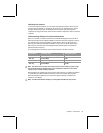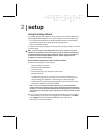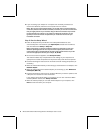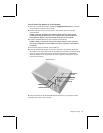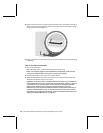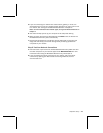
Chapter 1: Introduction 5
Adjusting the Antenna
To improve wireless reception, you can adjust the adapter’s antenna. Start with the
antenna pointing straight up, and adjust the antenna if you experience poor signal
strength. Certain areas, such as directly below the antenna, get relatively poor
reception. Pointing the antenna toward another wireless component does not improve
reception.
Understanding Wireless Transmission Standards
802.11 is a series of wireless transmission standards developed by the Institute of
Electrical and Electronics Engineers (IEEE) for wireless local area networks. Currently,
four specifications make up the 802.11 series: 802.11, 802.11a, 802.11b, and
802.11g. Your Microsoft Wireless PCI Adapter conforms to the latest specification,
802.11g. The main features that distinguish these specifications are connection
speed and radio frequency.
The following table summarizes the four specifications in the 802.11 series.
Specification Connection speed Radio frequency band
802.11 1 or 2 megabits per second (Mbps) 2.4 GHz
802.11a Up to 54 Mbps 5 GHz
802.11b 5.5 and 11 Mbps 2.4 GHz
802.11g Up to 54 Mbps 2.4 GHz
Note The benefit of the 2.4-GHz radio frequency band is that it allows for greater range
than the 5-GHz band. The drawback is that it is susceptible to interference from other
devices, such as 2.4-GHz cordless telephones.
Because 802.11b and 802.11g use the same radio frequency, your 802.11g adapter
is compatible with 802.11b devices. However, when you transfer data between
802.11b and 802.11g devices, the connection speed is limited to the 802.11b
maximum of 11 Mbps.
Note Your Microsoft Wireless adapter is not compatible with 802.11a-only devices.



